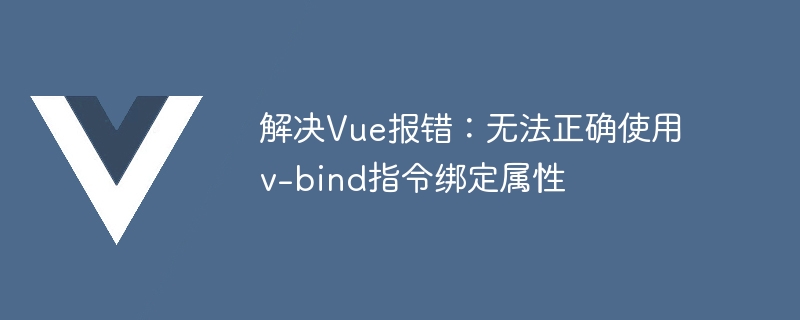

Solution to Vue error: Unable to correctly use v-bind instruction to bind properties
In the process of using Vue for development, we often encounter the use of v-bind instruction An error occurred while binding properties. This kind of error may cause our application to not run properly or display incorrectly, so it is very important for us to solve it quickly.
Below, we’ll cover some of the possible causes of this error and how to fix them.
A common error you may encounter when using v-bind to bind properties is The bound object property does not exist. This error may be caused by us not declaring or initializing the object properties correctly. For example:
Hello Vue!
In the above example, we declare an object attribute named classObject and then bind it to the class attribute of the p tag. But we did not initialize the value of this property correctly, resulting in an error when binding.
The way to solve this problem is to ensure that the values of the object properties are correctly initialized when creating the Vue instance. For example, we can set the initial value of red to true:
classObject: { red: true }
Another common mistake is binding The object property value is not of type string. This error often occurs when using v-bind to bind class or style attributes, because Vue requires the values of these attributes to be string types.
For example, if we want to add a custom class name to the p tag based on a certain condition, we can use v-bind to bind a string variable containing the class name:
Hello Vue!
If we make an error Binding className to a non-string value will result in an error. To solve this problem, we need to ensure that the value of the variable to be bound is of type string.
We often forget to use binding when we want to use JavaScript expressions when binding properties Expression syntax for directives. In Vue, we can use {{}} to include JavaScript expressions.
For example, if we want to dynamically set the class attribute of the p tag based on the value of a certain variable, we can write like this:
Hello Vue!
Through the above code, we try to bind the value of the dynamicClass variable to Set to the class attribute of the p tag. However, because we did not use expression syntax, the code reported an error.
In order to solve this problem, we should use the correct expression syntax and wrap the value bound by the v-bind directive in {{}}:
Hello Vue!
Change to:
Hello Vue!
With this modification, we can correctly use the v-bind directive to bind attributes.
To sum up, when we use Vue’s v-bind directive to bind properties, we may encounter various errors. We need to go through the code carefully to find and fix these issues.
Through the above solutions, we can locate and solve v-bind directive binding attribute errors faster, so that our Vue application can run normally.
The above is the detailed content of Solve Vue error: Unable to correctly use v-bind directive to bind properties. For more information, please follow other related articles on the PHP Chinese website!